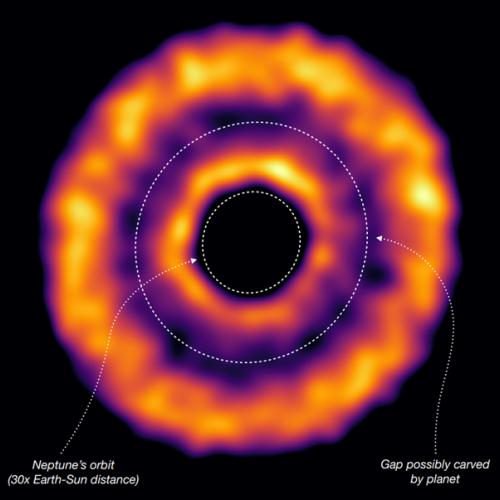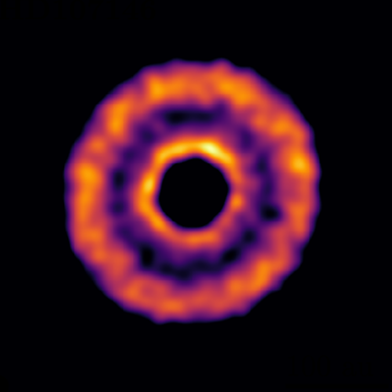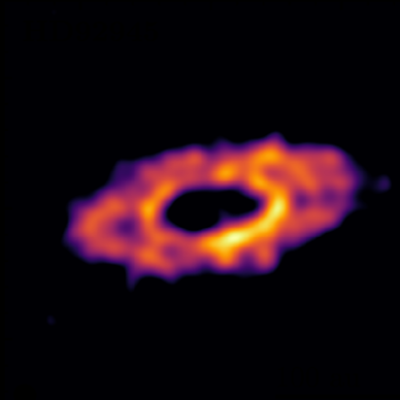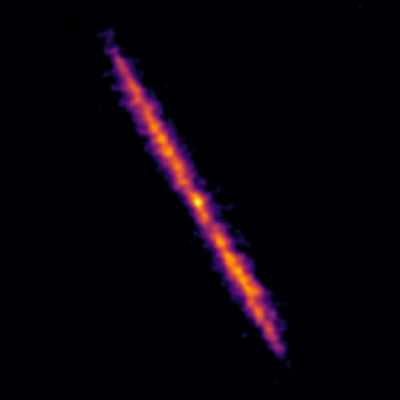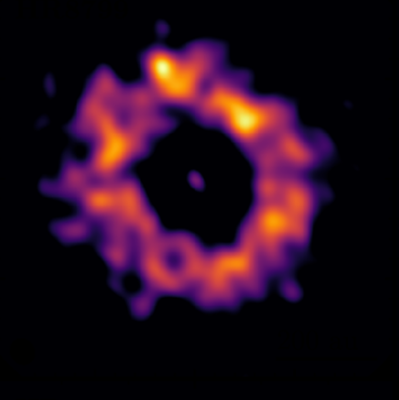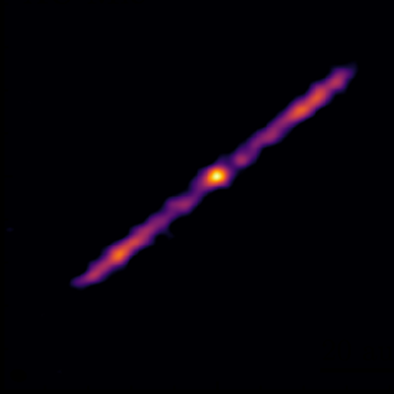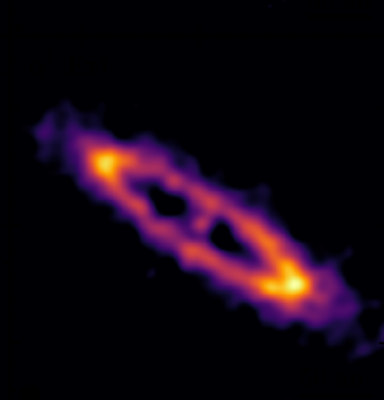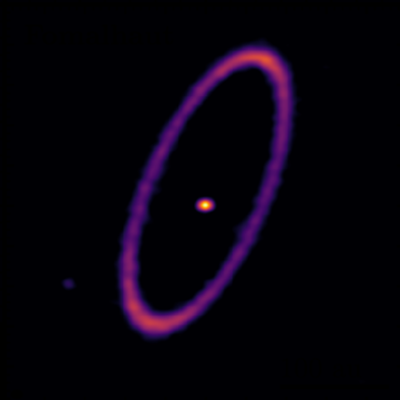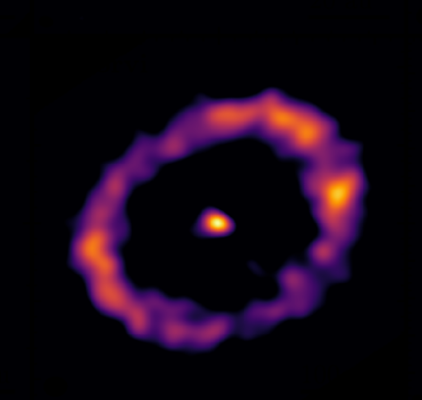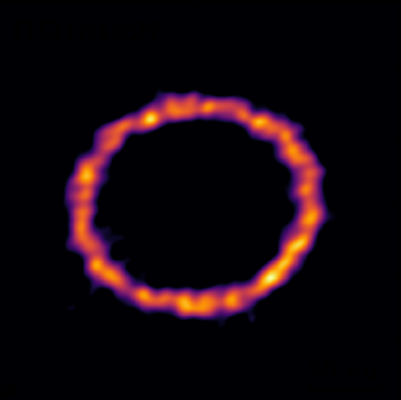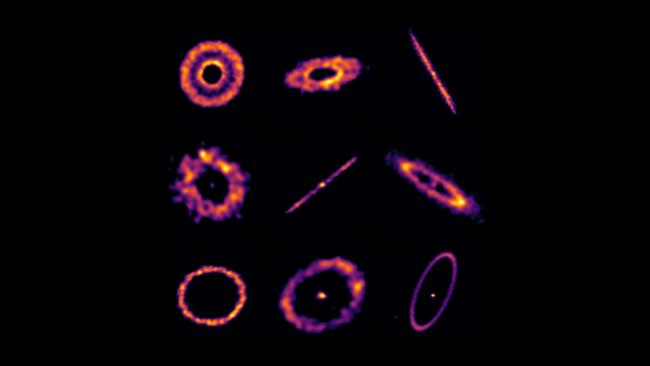
Searching for new exoplanets: Dr Sebastian Marino on using the James Webb Space Telescope
Dr Sebastian Marino hopes to use the hugely successful James Webb Space Telescope (JWST) to carry out research into how planetary systems around other stars form and evolve.
Sebastian is a Natural Sciences Fellow at Jesus College who specialises in planet formation and the architecture and dynamics of planetary systems. Between April 2023-June 2024, he and his team plan to observe stars that are surrounded by wide disks of debris that resemble huge versions of Saturn’s rings.
Sebastian’s team will focus on a few particular disks that have noticeable gaps in an attempt to confirm the hypothesis that as-yet-undetected exoplanets are responsible for “carving” these gaps with their gravitational pull as they orbit their host stars.
While detecting these exoplanets began as an ambitious goal, the latest imaging results indicate that JWST is capable of detecting planets of this size, bringing Sebastian’s hopes of discovery closer to fruition.
Sebastian tells us more about his research.
How did you first get involved with the James Webb Space Telescope?
There are many people that have been working on different aspects of the James Webb Space Telescope (JWST) for decades. Some have devoted their whole careers to it. I was not one of them. My expertise was something else, but astronomers can be quite good at switching their strategies once a new big telescope becomes available. So when shortly before its launch there was an open call to submit observing proposals, I immediately started working on different ideas of how I could use JWST to advance my research.
JWST was supposed to be much better at imaging low-mass planets than its predecessors, but it was not until I had checked all the technical details that I became convinced JWST could be the perfect instrument to answer crucial questions in my research. So I led one of more than a thousand teams that submitted proposals to use JWST in its first year of operation. After a dual-anonymous peer and technical review, our proposal was accepted.
How would you explain your research to someone sitting next to you on the bus?
My research aims to understand how planetary systems around other stars form and evolve. Today we know that most stars have their own planets that we call exoplanets and smaller bodies such as asteroids and comets just like the Solar system. My research focuses on studying those minor bodies that are typically clustered in belts that are analogous to the Asteroid and Kuiper belts in our Solar System. It turns out that it is often much easier to detect such belts of exocomets than planets, and from their shape, we can predict if there are exoplanets shepherding their orbits or carving annular gaps.
Exocometary material orbiting the star HD107146. The icy material is split into two annuli by a gap, hypothesised to have been carved by a planet that JWST will aim to detect. The size of Neptune's orbit is indicated as a reference. This image was created using data taken by ALMA, which captured the light coming from this system at a frequency of 230GHz (invisible to our eyes). Credit: Sebastian Marino.
What are the potential (and most exciting!) impacts of discovering the exoplanets and the process of “carving”?
While I have discovered the presence of these gaps in a few exocometary belts, detecting the planets responsible for them has been impossible because we did not have a telescope that was powerful enough to detect these putative Neptune-like planets. Only now after the launch of JWST, we finally have a telescope capable of detecting the very faint infrared radiation emitted by these planets.
So the potential is huge! First of all, we would be discovering a new class of exoplanet similar to Neptune, which we have never been able to study before. Such types of icy planets might play a fundamental role in the transport of key volatiles, such as water, locked inside comets, towards the inner region of systems where smaller and dry rocky planets could receive them to form oceans and atmospheres. Second, over the last two decades many theories have arisen about what processes shape exocometary belts, so detecting (or not) these elusive exoplanets would finally help us to understand how these systems really form and evolve. Finally, detecting these exoplanets would prove that we have a way of predicting which systems are more likely to have Neptune-like exoplanets. This is crucial if we want to discover and study many since blind searches around many stars are very expensive.
What are the biggest challenges you have faced so far in your search for the exoplanets and the process of “carving”?
The biggest challenge has been finding the ideal systems to search for this type of exoplanet. For that, one has to find a system with an exocometary belt and use the most powerful ground-based telescope, the Atacama Large Millimeter/submillimeter Array (ALMA), to see if they have gaps that could have been carved by exoplanets. ALMA observations are very hard to obtain, but thanks to a very good team and analysis techniques our team has developed, we have been successful in finding 3 of such systems that JWST will image between April and June 2023. But this is just the start. I was recently awarded 150 hours of ALMA observing time to discover more of these gapped belts, which will become ideal targets to follow up with JWST in the following years.
Which James Webb Space Telescope photograph has amazed you the most?
The first images released back in July were stunning. My favourite was the image of the Carina Nebula, peering through clouds of dust and gas where stars and their planetary systems are being formed. This photo shows in a great level of detail the structure of these clouds and how the huge cavern is being carved by the strong radiation of newly formed massive stars. More recently, JWST imaged its first exoplanet in a project I had the opportunity to participate in. The image shows the exoplanet as a very bright dot next to its star, demonstrating how JWST is performing even better than expected.
If your hypothesis is confirmed, what comes next?
If these exoplanets are detected, the next step will be to characterise their composition. For that, I will request new observations with JWST using a different instrument onboard to obtain spectra of their atmospheres that will allow me to measure their atmospheric composition. The atmospheric composition of a planet provides an incredible amount of information about how and where it formed and how massive it is. All this will be crucial to finally understanding how these systems formed and evolved.
